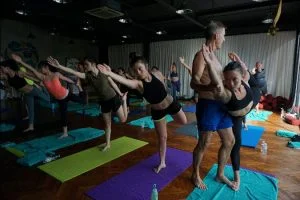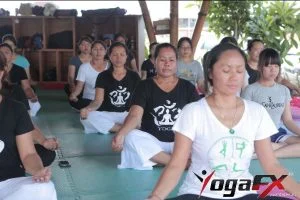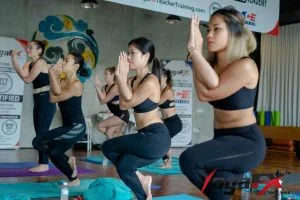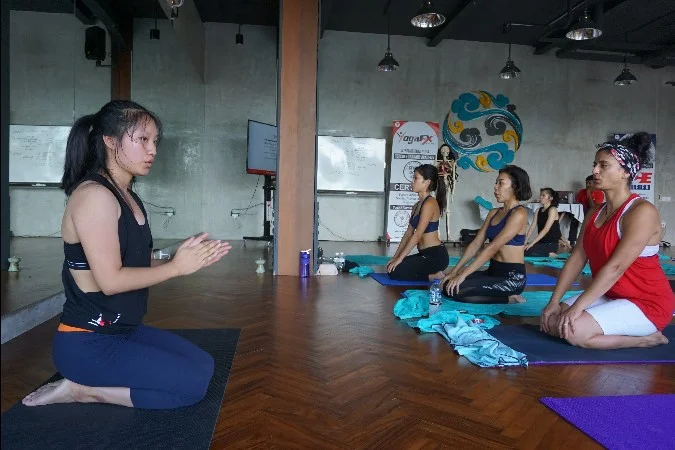There is substantial evidence to support the benefits that Bikram yoga has both as therapeutic and preventative forms of medicine.
Yoga is an ancient science that has been around for thousands of years, and will continue to grow because of its phenomenal effects on the quality of life. Benefits Bikram Yoga is sufferers of anxiety and depression, as well as those who have back and joint problems.Conditions such as depression, diabetes, rheumatoid arthritis, asthma, insomnia, high/low blood pressure, thyroid, and weight issues.
Physical benefits of Bikram yoga
As mentioned, Bikram Choudhury believed his Bikram practice could warm up the muscles so beautifully, they could become rid of the injury and move better than ever before. While we don’t advise taking Bikram yoga with any sort of injury (without first consulting your doctor, of course), Choudhury was correct in using his practice to loosen up the muscles and delve deeper into yoga poses. This deep stretching increases one’s flexibility, and holding each pose improves balance. Bikram yoga builds strength and tone muscles, sculpting your body with each and every class. And, of course, we can’t forget about the sweating. While it may seem unpleasant, the high heat opens pores and allows toxins to flow out of your system. After continued practice, these factors can aid in weight loss: burning calories, building muscle, and having more mindful, eating habits can all help you reach your fitness goals. here is the physical benefits of Bikram yoga :Detoxify Your Body
 One of the biggest benefits that you can get from doing a style of hot yoga, such as Bikram is that the heat helps to detoxify your body of unwanted toxins and chemicals. Sweating is great for you because you aren’t only leaking water when you sweat. Along with water you also sweat out a long list of toxins, chemicals, and other unwanted compounds that shouldn’t be in your body. The heat itself is great for you, something that Bikram Yoga definitely capitalizes on.The next time, instead of doing one of those juice cleanses when you want to rid your body of unwanted things, you could do some Bikram Yoga sessions.
One of the biggest benefits that you can get from doing a style of hot yoga, such as Bikram is that the heat helps to detoxify your body of unwanted toxins and chemicals. Sweating is great for you because you aren’t only leaking water when you sweat. Along with water you also sweat out a long list of toxins, chemicals, and other unwanted compounds that shouldn’t be in your body. The heat itself is great for you, something that Bikram Yoga definitely capitalizes on.The next time, instead of doing one of those juice cleanses when you want to rid your body of unwanted things, you could do some Bikram Yoga sessions.Increasing Flexibility
Another really neat part about Bikram Yoga, or actually Yoga in general, is that it helps to greatly increase your flexibility. All of the different poses and stretches that you do in this type of Yoga. It’s a practice that makes the perfect type of thing and the more you do the specific poses, the better you will be able to do them. Having more flexible muscles also helps to prevent injuries such as pulled muscles. Moreover, a type of hot yoga like Bikram Yoga is great for flexibility because the warmer your muscles are.The more flexible they become, thus making it easier to perform the various Bikram poses while also reducing the chances of injury.
Proper Breathing
 The next thing that Bikram Yoga is good for is to help you learn proper breathing techniques. This is actually something that all types of Yoga help you do.
A proper breathing technique lets you take in as much oxygen as you can manage. Getting enough oxygen means that you won’t get winded during exercising. It also means that your muscles get more oxygen, thus allowing them to work harder for longer. Also, this type of Yoga is pretty intense and therefore it also works out your respiratory system. Just like with pretty much any other part of your body, the more you train something the better it gets at its job. In this case, Bikram Yoga trains your respiratory system to be more efficient, works less for increased input, and helps you breathe better in general.
The next thing that Bikram Yoga is good for is to help you learn proper breathing techniques. This is actually something that all types of Yoga help you do.
A proper breathing technique lets you take in as much oxygen as you can manage. Getting enough oxygen means that you won’t get winded during exercising. It also means that your muscles get more oxygen, thus allowing them to work harder for longer. Also, this type of Yoga is pretty intense and therefore it also works out your respiratory system. Just like with pretty much any other part of your body, the more you train something the better it gets at its job. In this case, Bikram Yoga trains your respiratory system to be more efficient, works less for increased input, and helps you breathe better in general.It’s A Form Of Strength Training
 We are big fans of Bikram Yoga because it utilizes 26 different poses, all of which work to make you stronger. Pretty much all of the poses force you to engage your muscles to hold a certain position.Of course, we call this bodyweight training, because you are using your muscles to keep your own body weight up. Looking at some of the poses, it may not seem like they would train your muscles all that much, but that is definitely not the case.It takes a lot of strength to hold some of the positions in Bikram Yoga for a prolonged period of time, especially when you are all sweaty, hot, and slippery. This kind of Yoga also works really well to target all of the major muscle groups in your body, thus giving you a great full-body workout that will leave your muscles tired from top to bottom.
We are big fans of Bikram Yoga because it utilizes 26 different poses, all of which work to make you stronger. Pretty much all of the poses force you to engage your muscles to hold a certain position.Of course, we call this bodyweight training, because you are using your muscles to keep your own body weight up. Looking at some of the poses, it may not seem like they would train your muscles all that much, but that is definitely not the case.It takes a lot of strength to hold some of the positions in Bikram Yoga for a prolonged period of time, especially when you are all sweaty, hot, and slippery. This kind of Yoga also works really well to target all of the major muscle groups in your body, thus giving you a great full-body workout that will leave your muscles tired from top to bottom.Mental benefits of Bikram yoga
Like any yoga practice, Bikram yoga does wonder to improve the health of the mind. In class, you’ll be using extreme concentration to focus on each pose, movement, and breath. Since Bikram yoga involves quiet and meditative thinking, this workout is an opportunity to get inside your own head and discover your own thought patterns. Ever think about something bad that happened in your life and, as one bad thought leads to another, you’ve suddenly spiraled into a loop of negativity? Since Bikram yoga encourages noting these thought patterns, you’ll start to immediately recognize when you’re having these negative thoughts and be able to stop the spiral early on, turning that negativity into more beneficial, positive thinking. And as we’ve all been told before, positive thinking equals a much happier, more successful self. Improving flexibility, detoxing the mind, and strength building sounds like the kind of workout you’ve been looking for? Bikram yoga could be your new favorite class. A ClassPass membership offers access to a variety of Bikram yoga classes. in your area. so grab your water bottle, book a class and get ready to become a Bikram yogi.It helps to increase your flexibility by slowly stretching out your muscles to make them more mobile.
CLICK HERE For More Course Inclusions and Our June Main Event





